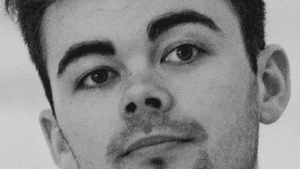Stay in the Loop
BSR publishes on a weekly schedule, with an email newsletter every Wednesday and Thursday morning. There’s no paywall, and subscribing is always free.
Modern dance on point
Andrew McNicol wins the 2018 BalletX Choreographic Fellowship

BalletX recently announced that British choreographer Andrew McNicol has been awarded the company’s 2018 Choreographic Fellowship. The fellowship pairs a rising choreographic fellow with a well-known and experienced choreographer (in this case, BalletX cofounder Matthew Neenan) as a mentor. Fellows and mentors each create a performance for the upcoming season. (click here for my review of last year’s winner).
"I knew they would be great"
This is exciting news. As an audience member, I love sharing in the discovery of new, young talent. Young choreographers often lack the polish of experienced creators, but their pieces can grab our emotions with an openness that pulls us right into the moment. There is also the chance I’ll brag to the next generation of dance fans, “I knew they would be great when I saw them at BalletX.”
For an up-and-coming choreographer, the fellowship offers a career-making opportunity to create work with a company that gobbles dance vocabularies and styles like potato chips. The fellowship pays a commission and the award shines on a resumé. It comes with a budget, 10 dancers, a supportive environment in which to create, and an experienced choreographer to mentor and advise for six weeks. Finally, an audience sees and applauds the result of all that work.
But the company didn’t need a special program to present new dance. BalletX is a world-class innovator that has introduced 63 world premieres over the past 12 years. The company creates more new pieces in one season than many dancers experience in a lifetime. So why did they create this fellowship?
Creating a conversation
The simple answer is need. While choreographic institutes and programs exist, none offer this level of real-world experience in making a creative life in the arts. Someone needed to start the conversation with young choreographers about working within the constraints of a company, making contacts, making a living.
With a solid six weeks of creating on a budget and working with a mentor, a few more talented young choreographers may develop the tools they need to climb the slippery ladder of success. As a company that showcases original work by a wide variety of choreographers, BalletX is uniquely situated to provide those tools.
BalletX cofounder Christine Cox explains that a director, while granting the choreographer’s artistic vision in a commissioned piece, must also satisfy the audience’s desire for an exciting night of dance. A company that draws primarily from the repertoire can curate that experience by selecting the right pieces. But when the season mostly contains premieres created for the company, the director is in the awkward position of curating people.
Being at the cutting edge of creativity can produce surprising, wondrous experiences. But sometimes, things don’t go quite as smoothly, and a piece may be finished before a choreographer has the chance to ask, “What do you think?” The fellowship gives young choreographers a great opportunity to learn through a conversation with a more experienced peer and with the company. It also gives the company a laboratory in which they may create a conversational bridge between themselves and the choreographers.
But, Cox says, “I really wanted this to be a catalyst for our organization, to dive in deeper into the inspiration behind the work. When you see work, why is it compelling? How do we tell better stories as contemporary ballet makers? How do we push the art form further and deeper and open more doors to bring more people in?” A conversation that engages these questions openly and with enthusiasm can draw out the best in choreographers, dancers, and companies.
Keeping a company on its toes
More important for audiences, however, is the question of where that conversation takes BalletX. The first hint is McNicol himself. Andrew McNicol comes out of the Royal Ballet School with classical training and a fresh perspective on contemporary ballet. “He is a very physical choreographer,” Cox says, “and a lot of his work is in pointe shoe. We chose him really on a sense of what I want the company to look like in the future.”
As Cox explains, there are a lot of modern-dance and classical companies out there, but BalletX, founded by ballet dancers, mindfully set out to occupy the space between the two. In retrospect, the company has veered closer to modern dance than it originally intended. But Cox is determined to return the company to its ballet roots. “Everybody next year will be doing something on pointe,” she said, then asked (and answered) the question that will keep the company true to itself: “Do we only have heart and soul when we’re in socks or bare feet? Can we have heart in pointe shoes? Of course we can!”
Sign up for our newsletter
All of the week's new articles, all in one place. Sign up for the free weekly BSR newsletters, and don't miss a conversation.
 Camille Bacon-Smith
Camille Bacon-Smith